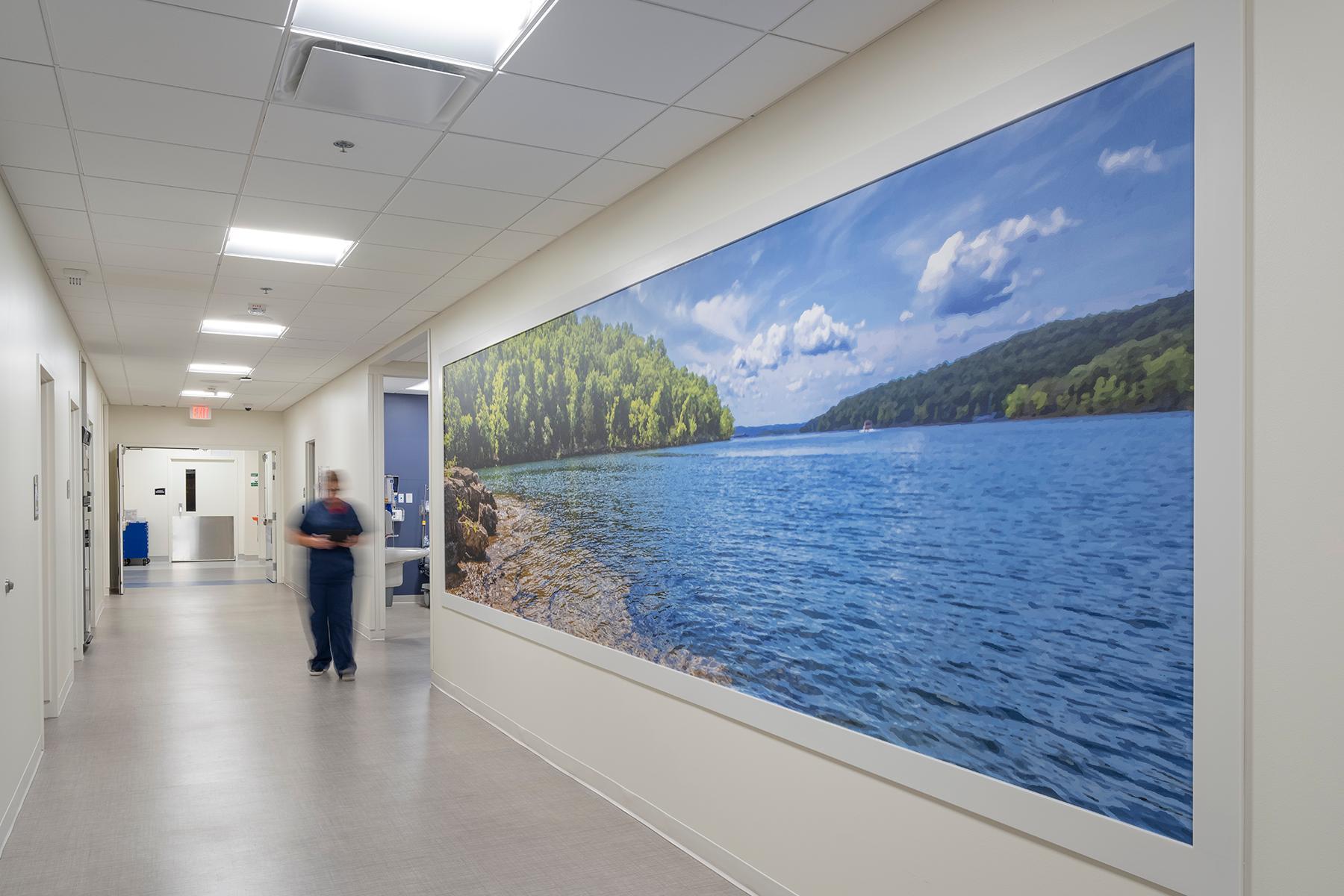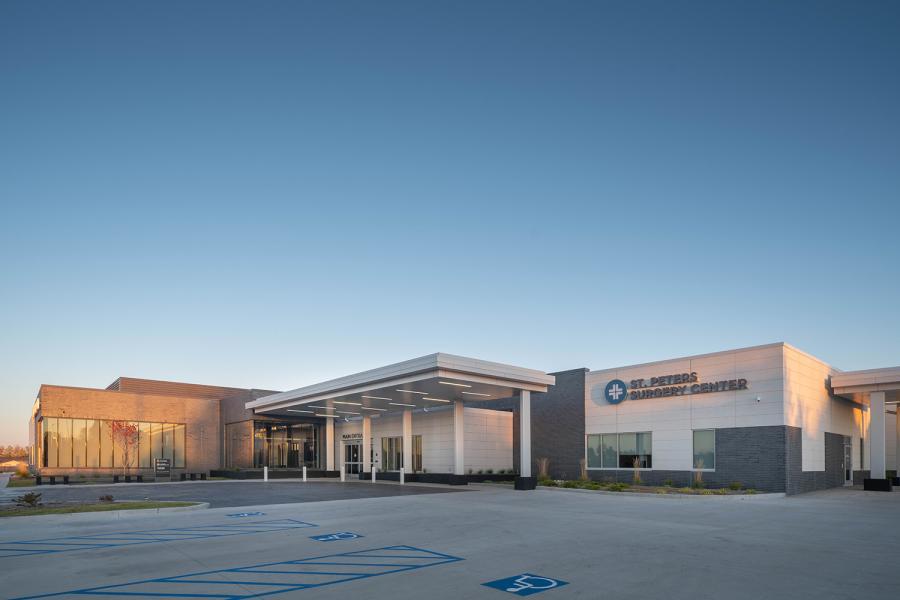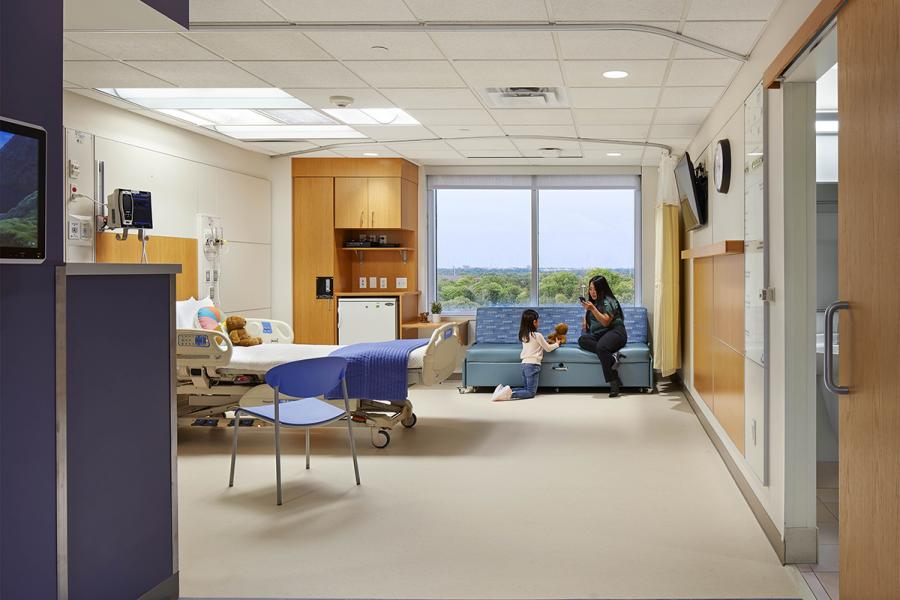3 Ways Environmental Graphics Make a Positive Impact on Patient Experience

Graphics and large-scale artwork can play a major role in creating high-impact healthcare environments. These graphics can provide positive distractions and can enhance the patient experience in three key ways: supporting storytelling, reinforcing wayfinding and navigation, and catering to the care of intergenerational patient populations and their specific needs.
Supporting Storytelling
Inviting environments are typically ones that tell a cohesive story from the facility’s exterior to interior and reflect the health system’s mission and local influence. By incorporating large-scale graphics strategically into the architectural design package, the result is a more integrated design that celebrates the health system’s vision for its patient experience. At the St. Peters Surgery Center & Clinic, the architectural design package included large-scale graphic wallcoverings featuring biophilic images from the region. The 10-foot prep-recovery corridor in the well-trafficked are of the surgery center features the shoreline of a local lake, celebrating the art of a local photographer and providing a comforting visual for patients.
Reinforcing Wayfinding & Navigation
Navigation is vital for a good patient and guest experience within healthcare environments and can increase patient satisfaction, positively influence patients' attitudes when interacting with staff and can even impact the perceived quality of care received. In addition to a clear signage strategy, there are several approaches designers can employ to improve wayfinding and navigation. Incorporating bold graphics can provide memorable landmarks for wayfinding and varying color can differentiate departments or patient hallways creating clear separation and a sense of place to orient visitors. In the Children's Minnesota Pediatric Intensive Care Unit, a wrapping graphic element provides visual content for children, adolescent patients and their parents, and illustrates a positive distraction that is bright, colorful and hopeful all while providing cues to the unit's nurse station for those that may need assistance.
Catering to Intergenerational Care
It is important that when the design team is developing a graphics package, they are considering the patient population being served within the healthcare facility. From pediatric patients with lower sight lines to older adults with dementia, careful selection of graphics need to cater to a variety of patient demographics, visual acuity levels and cultural preferences. At the Jewel and Jim Plumb Heart Center, nine patient care corridors within the outpatient clinic are differentiated with bold and distinctive color and letter identification to assist patients and guests to and from the exam spaces. Additionally, oversized and contrasting signage in public areas further supports wayfinding to important destinations and are easily viewed by those with lower visual acuity levels.
Environmental graphics are not only for show – they also tell. While these graphics offer a visually-appealing aesthetic within a medical space, they also serve a proactive purpose of communicating vital information to patients and families through direction and a sense of place. By harnessing the power of intentional design n through color; graphics and imagery; environmental graphics can transform an often intimidating medical environment into a welcoming place.
Reach out to Megan McNally, CHID, CID, IIDA, EDAC, NCIDQ, Associate Director of Interior Design, to learn more or to talk about your interior design needs.
- Email: ryan.pr@ryancompanies.com
- Phone: 612-492-4160

